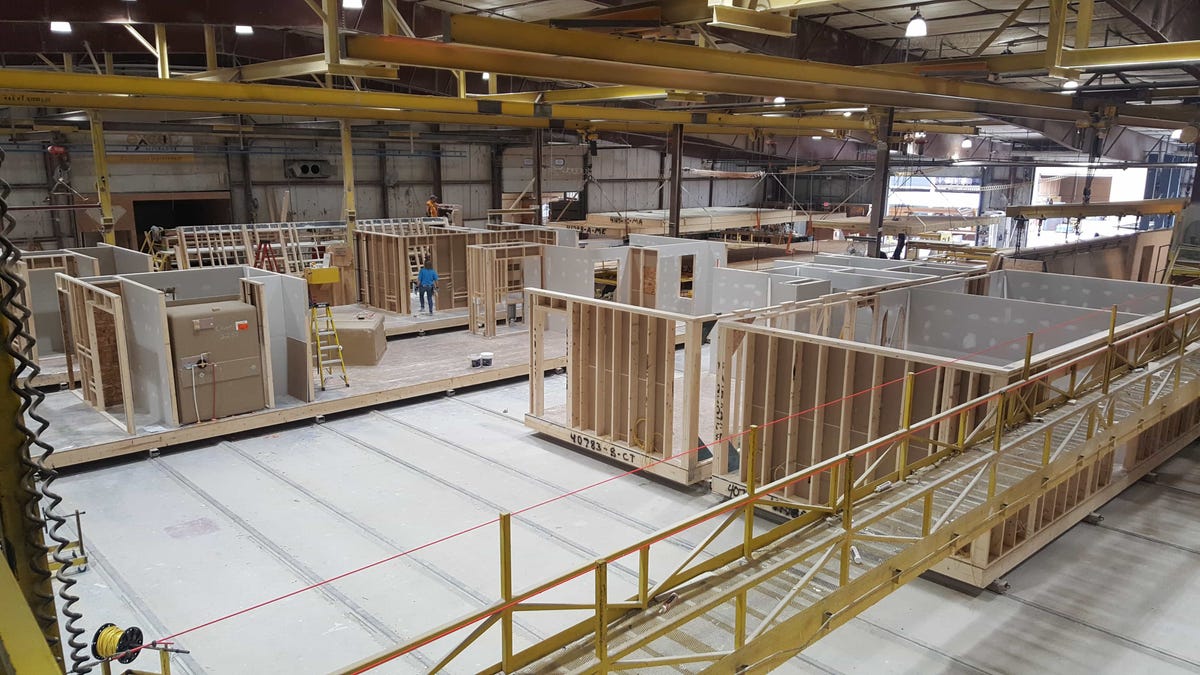US home buyers and sellers are facing the toughest housing market in a decade, which looks set to continue in 2023. But while Americans struggle with the costs of building new homes, or selling aging housing stock in need of repairs, modular home businesses are seeing an opportunity.
Supply for housing in the US may be dwindling, but the demand is not. As prices rise, more Americans need affordable housing. And as interest rates climb, many would-be first-time homebuyers are finding themselves sidelined.
A modular home, however, fabricated off-site in a factory, can be built in six weeks at a lower cost than building a new home on-site from scratch. And for those who aren’t ready to buy one, renting one is increasingly an option.
Modular homes have a long history
Modular housing isn’t new. A century ago, Americans were ordering prefabricated homes through the Sears catalog. But a host of contemporary problems for homebuilders and buyers has given the concept new relevance.
“It’s the perfect storm,” said Ken Semler of Impresa, one of the largest custom modular home companies in the US. “There’s not enough employees. There’s the broken supply chain, and prices are out of control, which really lends itself to doing things in an organized fashion.”
Traditional homebuilding, he adds, “is the most disorganized thing. Housing is the only thing you have in your life that is not built in a factory.”
How to build a modular home
Here’s a breakdown comparing the two processes:
Impresa, based in Pennsylvania, works with 20 factories across the US. Semlar recently opened another factory in South Carolina building modular homes for areas affected by Hurricane Ian in Florida. The southeast is becoming a bigger market for modular home building year-round, just as the lumber industry is moving south.
The good news about the US housing slowdown
As supply chain issues start to work themselves out, the prospect of a recession in 2023 has some industry experts believing the down time will allow supply and labor levels to normalize.
A short-lived recession may bring the housing market back to a good place by the end of 2023, according to projections by Forest Economic Advisors (FEA). This means that more Americans may be able to purchase a home by 2024, and modular housing would make that more affordable.
In the meantime, Impresa and other modular home builders are seeing an uptick in build-to-rent customers, who are purchasing the homes for the purpose of long-term rentals.
Build-to-rent modular homes
In 2021, build-to-rent properties made up just 5% of the market but are on the rise. On average, 31,000 build-to-rent homes were built each year prior to the pandemic, but 50,000 were built from September 2019 to September 2020 alone, according to the National Association of Realtors.
“We’re seeing a lot of growth in the build-to-rent customer, which isn’t an individual homeowner. It’s a company, a corporation, or a group of people,” said Semler. This means that the real estate that companies bought up during the pandemic may be developed into residential rental properties.
Semler thinks a shift in the market could soon have him building for more build-to-rent investors than single-family homeowners. “We’ve been told to lease a car for so long you don’t buy a car,” Semler says. “In three years or so you’re going to trade it in and get a new one anyway, at the end of your lease. And I think people are starting to treat housing like that to a degree.”
